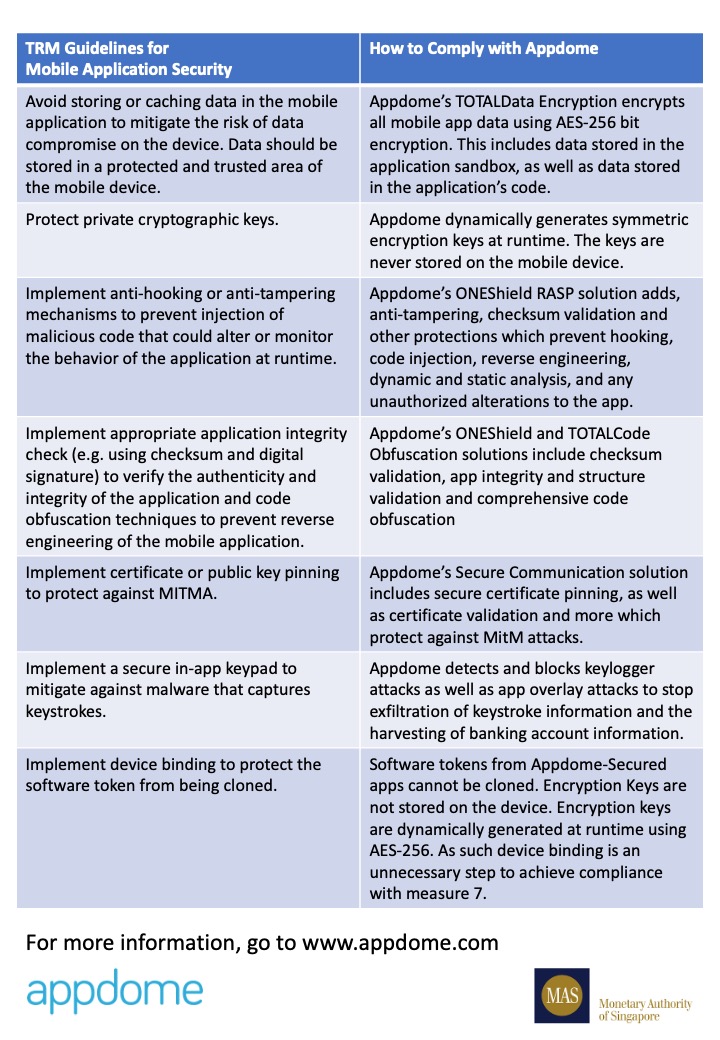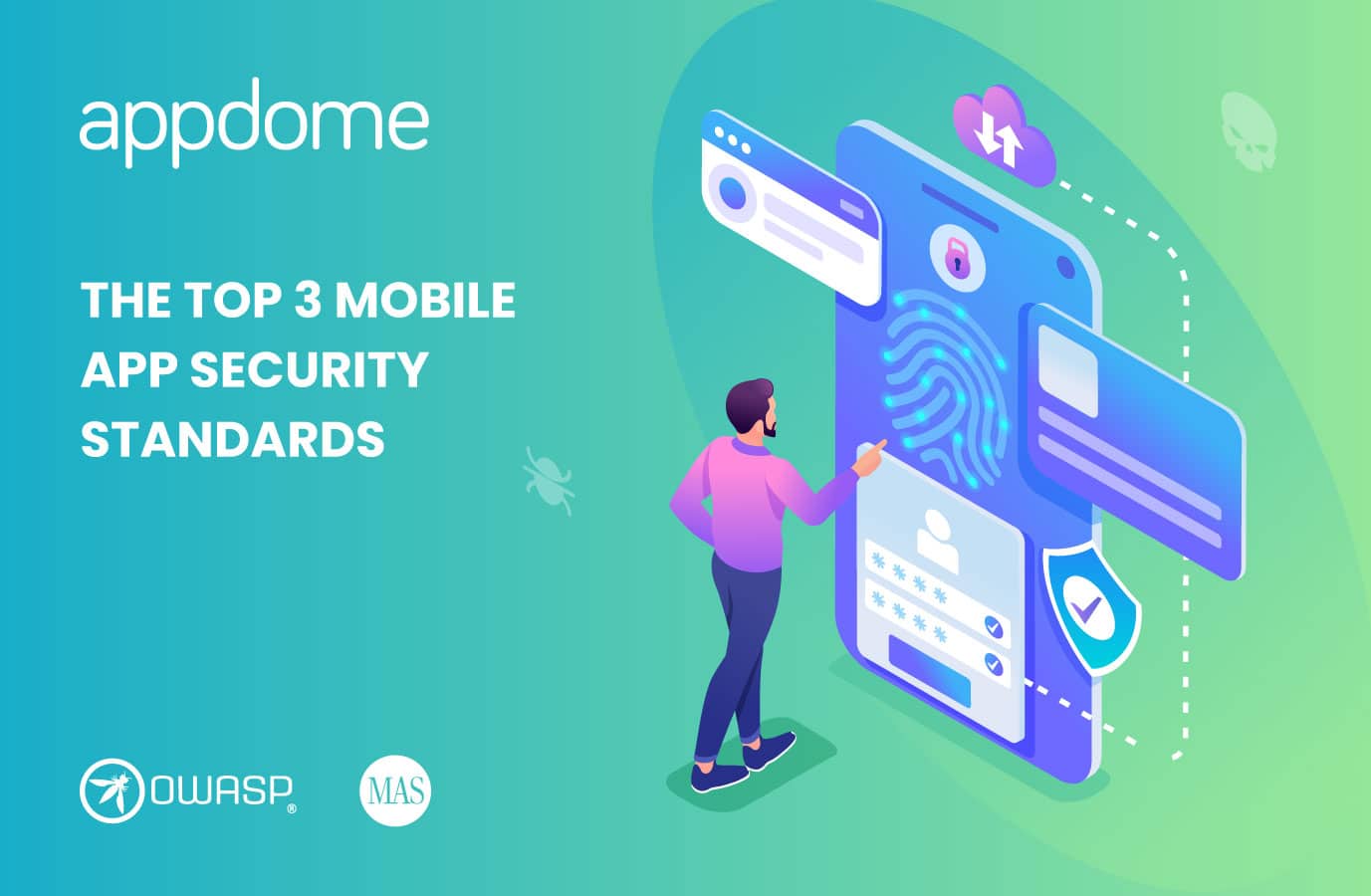Earlier this year, Appdome published a global mobile app security survey, in which we asked 10,000 mobile consumers about their expectations on mobile app cybersecurity. And the voice of the mobile consumer is clear – in-app security and malware protection are critical to the business model and brand promise of every mobile app. Many of the CISOs we’re working with are using the data of this survey to prioritize their mobile app security projects and move quickly to implement improved security across Android and iOS apps.
Some CISOs have a good understanding of the security project they want to implement. Others are using an industry standard to model their project. This blog lists the best mobile app security standards CISO use when defining their cybersecurity projects.
The Top 3 Mobile App Security Standards
While there are many different standards, here are the top 3 mobile app security standards in the industry:
- OWASP Mobile Top 10
- Mobile Application Security Verification Standard (MASVS)
- TRM Guidelines for Mobile App Security
These standards are very comprehensive, which is also one of the challenges when trying to implement them. When CISOs are asking their mobile developers to manually implement any of these 3 standards, the timeline for implementation can stretch easily into several months or even years. That is, if they have the engineering security resources to implement every requirement in the first place. And the same is true when using different 3rd party security SDKs. In mobile app security, implementing an SDK is never just a few lines of code.
 Luckily CISOs have a viable alternative; Appdome’s no-code mobile app security and fraud prevention platform. We’ve written extensively on how organizations can implement any industry standard completely, in minutes, without code or coding.
Luckily CISOs have a viable alternative; Appdome’s no-code mobile app security and fraud prevention platform. We’ve written extensively on how organizations can implement any industry standard completely, in minutes, without code or coding.
OWASP Mobile Top 10
Conceivable the most popular and most widely referred to industry standard is the OWASP Mobile Top 10. Even though the latest list was compiled in 2016, most everybody I talk to today knows of and/or refers to this top 10. With Appdome’s all-in-one mobile app security solution, protection against the OWASP Mobile Top 10 risks can be added to any Android and iOS app, developed in any native framework such as Java, Kotlin and Swift and any non-native framework such as Flutter, React Native and Maui, Xamarin. (Refer to this blog for more information on the difference between native and non-native frameworks in mobile apps.) All a developers or security professional needs to do to protect a mobile app against the OWASP mobile top 10 risks is bring their .aab, .apk or .ipa binary to Appdome. There, they select the different features required to protect their app using a simple point-and-click UI, and click the big green Build My App button. The Appdome platform will add the required security to their Android or iOS app in seconds – no code or coding required!
We’ve documented in great detail how you can to protect your mobile apps against the 10 OWASP mobile app security risks. In a 2nd blog, we talked how Appdome’s Mobile Fraud Prevention solution also helps mitigate against the mobile top 10 risks.
Mobile AppSec Verification Standard
Another good industry standard CISOs use is the Mobile AppSec Verification Standard or MASVS. The Mobile AppSec Verification Standard guidebook defines the MASVS as follows: “The MASVS can be used to establish a level of confidence in the security of mobile apps.”
There are a total of 59 comprehensive MASVS requirements. Most of the requirements can be implemented on Appdome with a combination of application shielding (RASP), obfuscation, encryption, jailbreak/root prevention, Man-in-the-Middle prevention, data loss prevention (DLP), fraud prevention, malware prevention, piracy prevention and Appdome Threat Events.
Again, Appdome makes it very easy for CISOs to implement and comply with the Mobile AppSec Verification Standard. In fact, when I review the MASVS standard with customers, they agree that manually implementing all 59 requirements comes out to about 72 weeks, give or take a few weeks. And on Appdome, the outcome can be achieved in minutes, guaranteed.
TRM Guidelines for Mobile App Security
The Technology Risk Management (TRM) Guidelines published by the Monetary Authority of Singapore (MAS) are, by and large, considered a benchmark of compliance standards for all regulated Financial Institutions (FIs). The latest version of the TRM Guidelines was published in January 2021. Annex C specifically talks to Mobile Application Security and lists 7 security measures that should be considered when securing mobile apps.
And just like with the other standards, complying with the TRM Guidelines for Mobile App Security requires no coding. The desired security outcome can be achieved in seconds.

Ready to Implement One of the Top Mobile App Cybersecurity Standards?
Our mission is to protect the mobile economy and the people who use mobile apps in their lives and at work. Appdome makes it easy for CISOs to implement the mobile app security standard of their choice; OWASP Mobile Top 10, Mobile AppSec Verification Standard or the TRM Guidelines for Mobile App Security. They (and every other industry standard) can be implemented on Appdome in seconds, no code or coding required.
Contact Appdome today to learn how easy it is to get started with Appdome and start implementing your industry mobile app security standard of choice.






